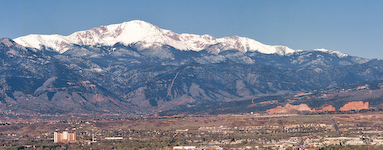How God Evolves, by Ken Burrows: Freethought Views, March 2018
How God Evolves
by Ken Burrows
An age-old debate pits evolution against creation-by-God. But what if God himself was created by others? And what if God evolves?
Religious history scholar Reza Aslan engages such questions in his book God: A Human History. Here he documents that people’s compulsion to “humanize the divine” dates back many millennia and has resulted in continually shifting concepts of “God.” In this sense humans have indeed created God as an entity on an evolutionary journey.
Aslan says this journey can be traced back 12,000 or more years. One of the earliest religious impulses, animism, attributed a spiritual essence to both human and inanimate objects. These objects were later seen to have—or perhaps be—personal spirits, and eventually advanced into being revered as individualized gods, always plural in number. Ancients worshipped these gods and gave them human physical features when depicted in art forms. They also attributed human emotions to their gods, ranging from loving and
protective to angry, capricious and merciless. Aslan notes the most enduring of all religious concepts is that of the “god-man”—an imagined human with extraordinary abilities, omnipresent and omniscient.
For thousands of years, multiple gods were the norm. Monotheism was considered suspect, partly because no single god was thought adequate to account for and oversee the full range of life events, the natural world, vagaries of fate, and unexplainable mysteries. A few ventures into monotheism in early centuries B.C.E. were quickly rebuffed; pantheons of gods retained favor.
Aslan sees monotheism begin to come into acceptance as a means by which Israelites rationalized their defeat by the Babylonians in 586 B.C.E. They saw this catastrophe as a stronger god defeating their “best” god at the time, Yahweh. They began to think defeat could be part of Yahweh’s plan, that one god could be responsible for both good and evil. They basically reimagined him to better fit real-world events, and modified the overall concept of “God.” Monotheistic language then began to appear frequently in sacred texts. Aslan notes that adapting the divine to fit temporal circumstances is a repeating practice in religious history, a way that humans keep their gods worthy of worship.
Aslan finds the early Christian church promoting belief in one all-powerful God, partly to parallel governance under one authoritarian pope. When Constantine prevailed in a civil war in 312 C.E., he mirrored this tactic, adopting a monotheistic religious system for his empire to better consolidate rule and minimize conflicts. He helped embed the “one true God” belief at the Council of Nicea in 325, whose legacy continues to the present.
Anthropologically, today’s one-and-only personalized God is a recent creation, occupying a relatively small segment on the timeline of evolving religious thought. Aslan asserts it is merely one faith choice that no one can prove or disprove. He chooses pantheism for himself, believing “the universe is God.” Not a human-like overseer/protector/rewarder/punisher but rather a “pure existence” that humans share in. He disembarks the evolutionary train that has long followed the track of humanizing the divine and that (for now) insists on a single god-man supreme being, mainly because it’s the only God most people can, or want to, relate to. Aslan challenges that narrowly expedient conceptualizing and urges his readers to remember: “It is we who have fashioned God in our image, not the other way around."
Published in the March 14-21 issue of theColorado Springs Independent with the quotation below.
"Evolution is the fundamental idea in all of life science - in all of biology."
Bill Nye
